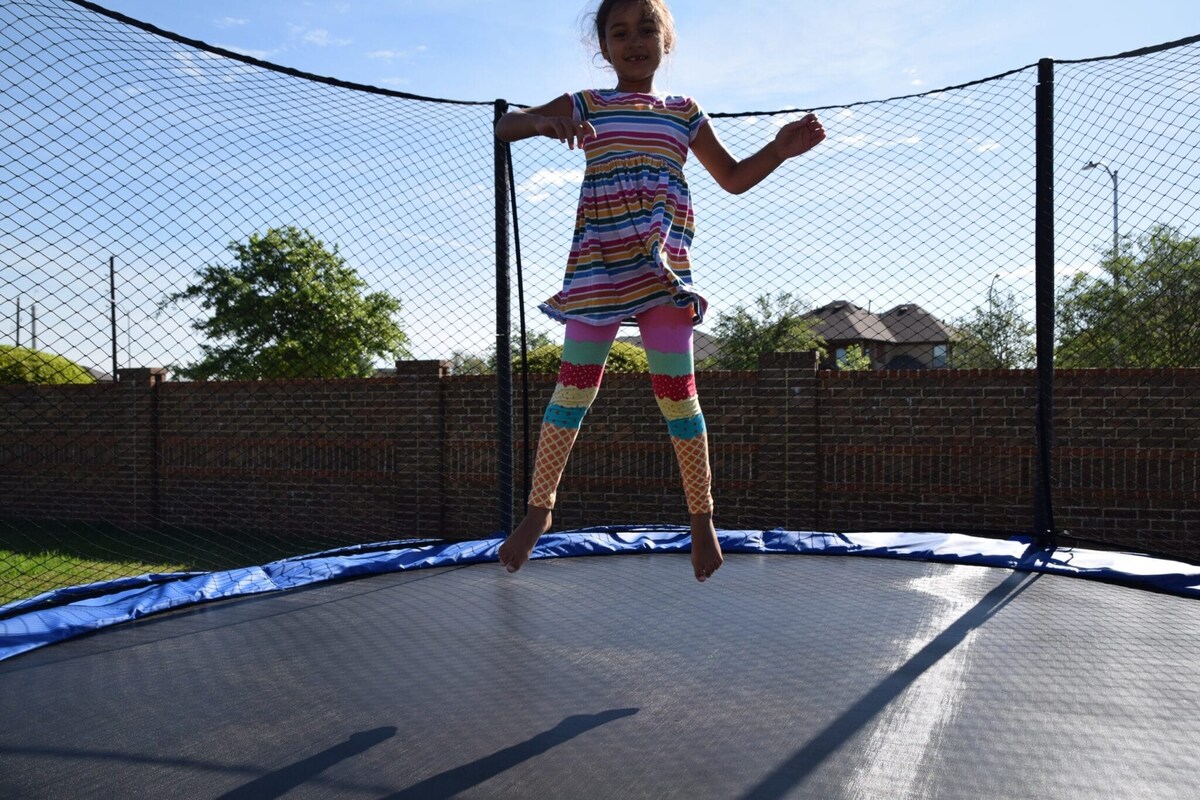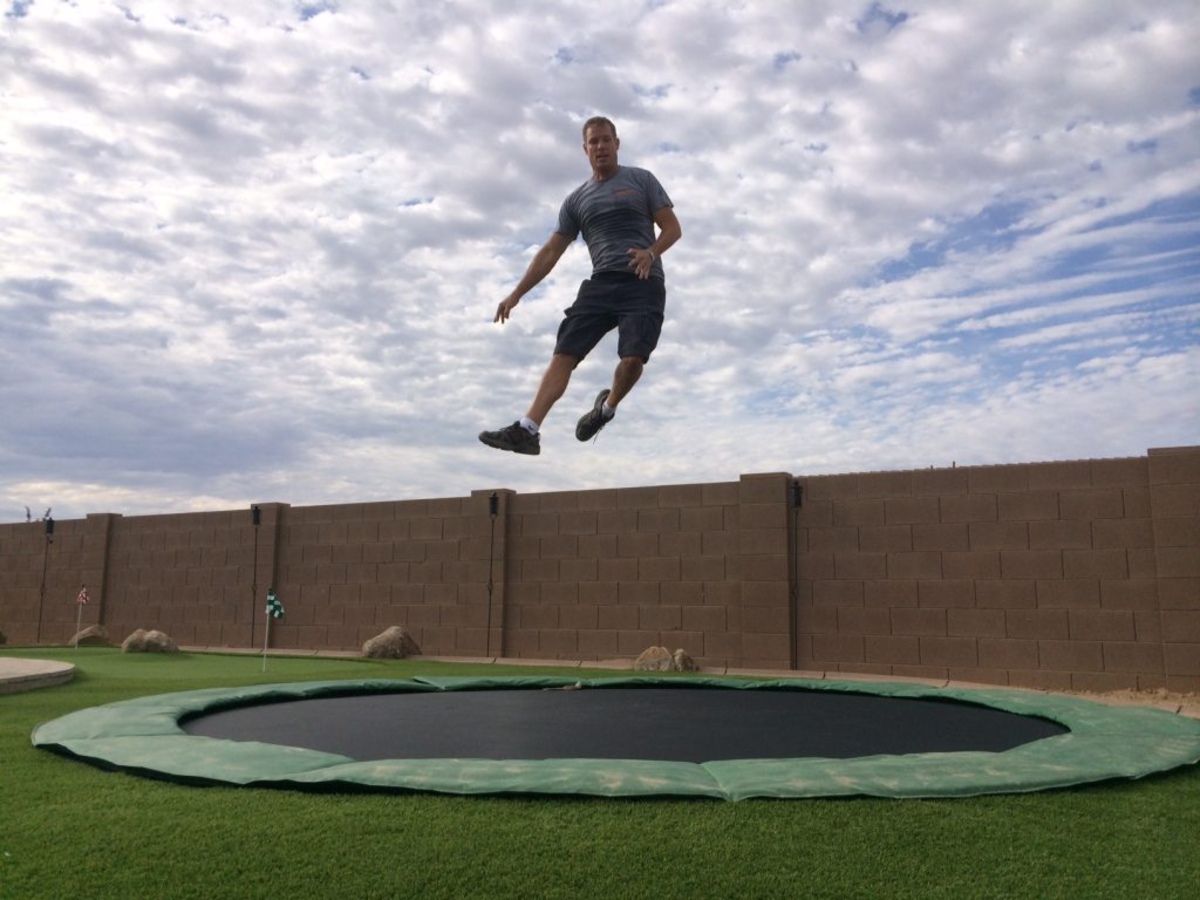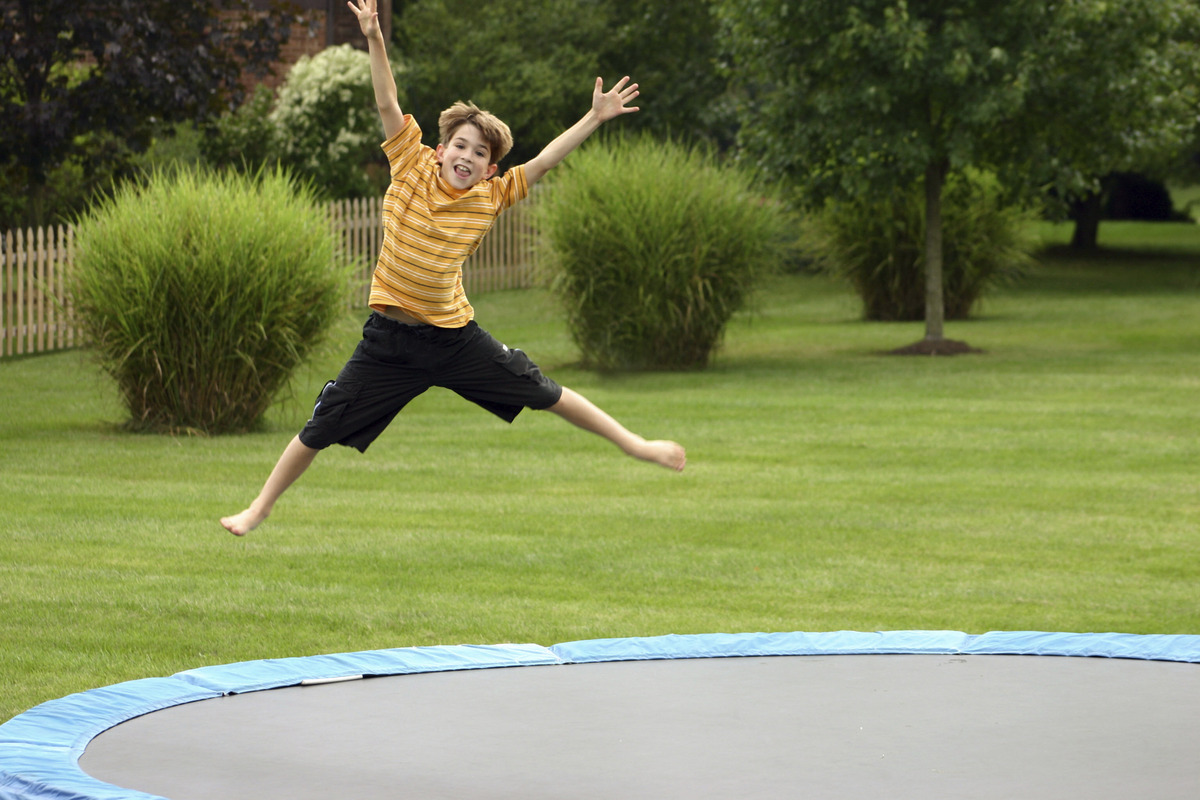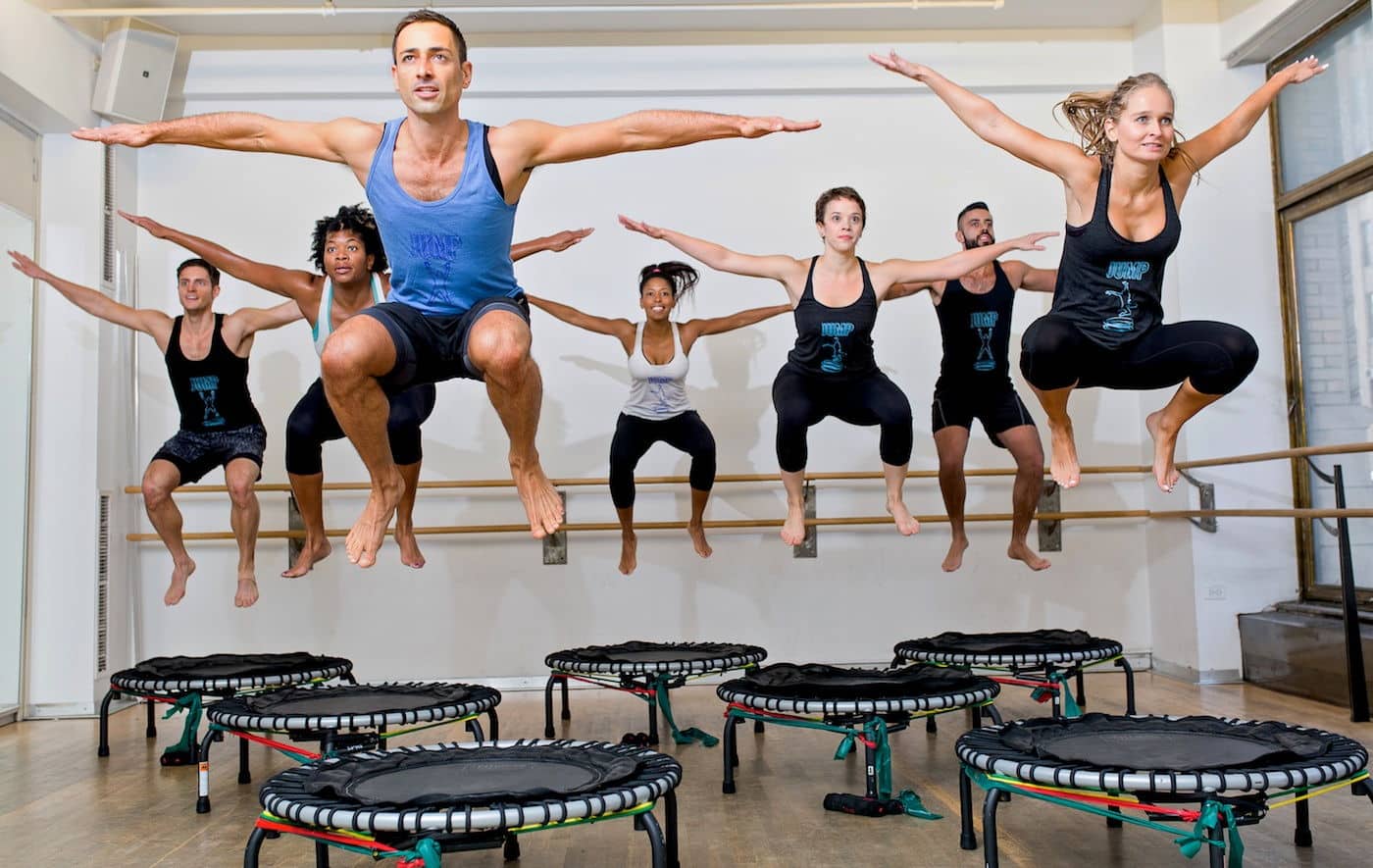Home>Gardening & Outdoor>Outdoor Recreation & Activities>How Long Should You Jump On A Trampoline


Outdoor Recreation & Activities
How Long Should You Jump On A Trampoline
Modified: April 23, 2024
Discover the ideal duration for trampoline jumping to ensure a safe and enjoyable outdoor recreation and activities experience. Learn how long to jump on a trampoline for maximum fun and fitness benefits. Find out more!
(Many of the links in this article redirect to a specific reviewed product. Your purchase of these products through affiliate links helps to generate commission for Storables.com, at no extra cost. Learn more)
**
Introduction
**
Trampolines have long been a source of joy and entertainment for people of all ages. The simple act of bouncing up and down on a trampoline can evoke feelings of exhilaration and freedom. However, amidst the excitement, it's important to consider the duration of trampoline use to ensure safety and maximize the benefits. In this article, we'll explore the optimal duration for trampoline jumping, taking into account both the physical benefits and safety considerations. Whether you're a seasoned trampoline enthusiast or a novice looking to embark on this thrilling activity, understanding the ideal duration for trampoline jumping is essential for a safe and enjoyable experience. So, let's delve into the world of trampolines and discover the perfect balance for reaping the rewards while minimizing risks.
Key Takeaways:
- Bouncing on a trampoline offers a fun way to exercise and bond with family, but it’s important to jump for short periods, especially for kids, to prevent fatigue and injuries.
- Prioritize safety and start with shorter trampoline sessions, gradually increasing duration as fitness improves. Listen to your body and seek professional guidance if needed for a safe and enjoyable experience.
Read more: Why Is Jumping On A Trampoline Good For You
Benefits of Trampoline Jumping
Trampoline jumping offers a myriad of physical and mental benefits that make it an appealing activity for individuals of all ages. Here are some of the key advantages:
Physical Fitness: Trampoline jumping provides a full-body workout, engaging various muscle groups and promoting cardiovascular health. The repetitive bouncing motion strengthens the legs, while the act of stabilizing the body during jumps enhances core strength. Additionally, the coordination required for trampoline use contributes to improved balance and agility.
Low-Impact Exercise: Unlike many other forms of physical activity, trampoline jumping is gentle on the joints due to the shock-absorbing surface. This makes it an ideal option for individuals seeking a low-impact exercise that still delivers significant health benefits.
Calorie Burning: Jumping on a trampoline can be an effective way to burn calories. It elevates the heart rate and can aid in weight management when incorporated into a regular fitness routine.
Stress Reduction: The rhythmic bouncing on a trampoline can be a stress-relieving activity, offering a sense of freedom and joy. The release of endorphins during physical activity can also contribute to an improved mood and reduced stress levels.
Lymphatic System Stimulation: The up-and-down motion of trampoline jumping stimulates the lymphatic system, which plays a crucial role in immune function. This can aid in detoxification and promote overall immune system health.
Family Bonding: Trampoline jumping can be a fun, shared activity for families, fostering bonding and creating lasting memories.
With these benefits in mind, it's clear that trampoline jumping is more than just a recreational pastime; it's a valuable addition to a healthy lifestyle. However, to fully reap these rewards, it's essential to consider the recommended duration for trampoline use and prioritize safety.
Safety Considerations
While trampoline jumping offers numerous benefits, it’s crucial to prioritize safety to prevent potential injuries. Here are some key safety considerations to keep in mind:
- Supervision: It’s essential for children to be supervised by a responsible adult while using a trampoline. This helps ensure that they adhere to safety guidelines and avoid risky behavior.
- Proper Equipment: Ensure that the trampoline is set up on a level surface and equipped with safety padding, enclosure netting, and sturdy support structures. Regularly inspect the trampoline for any signs of wear and tear, and promptly address any maintenance needs.
- Single User at a Time: To minimize the risk of collisions and falls, it’s advisable to allow only one person to jump on the trampoline at a time. Multiple users can disrupt the balance and lead to accidents.
- Age and Size Appropriateness: Consider the age and size of trampoline users. Young children should use age-appropriate trampolines, and older individuals should adhere to weight restrictions to prevent overloading the trampoline surface.
- Teaching Proper Techniques: Educate trampoline users on safe jumping techniques, including landing with slightly bent knees, avoiding somersaults and flips without proper training, and staying away from the trampoline’s edges.
- Regular Maintenance: Conduct routine inspections of the trampoline’s components, including springs, frame, and mat, to ensure that they are in good condition. Address any issues promptly to maintain a safe trampoline environment.
- Weather Conditions: Avoid using the trampoline during inclement weather, such as strong winds or thunderstorms, to prevent accidents and damage to the equipment.
By prioritizing safety and adhering to these guidelines, trampoline enthusiasts can enjoy this activity while minimizing the risk of injuries. However, in addition to safety measures, it’s essential to consider the recommended duration for trampoline jumping to strike a balance between reaping the benefits and ensuring well-being.
It is recommended to jump on a trampoline for 10-20 minutes at a time, with breaks in between to prevent overexertion and reduce the risk of injury. Always listen to your body and stop if you feel any discomfort.
Recommended Duration for Trampoline Jumping
When it comes to the duration of trampoline jumping, finding the right balance is essential for reaping the benefits while minimizing the risk of overexertion or injury. The recommended duration varies based on factors such as age, fitness level, and individual health considerations. Here are some guidelines to help determine the optimal duration for trampoline jumping:
- Children: For children, especially those under the age of six, shorter sessions of trampoline jumping are recommended. A duration of 5 to 10 minutes, with frequent breaks, is suitable to prevent overexertion and fatigue. As children grow older and develop better coordination and stamina, the duration can be gradually extended, always with adult supervision.
- Teens and Adults: Older individuals with more developed physical capabilities can engage in trampoline jumping for longer durations. Sessions of 15 to 30 minutes, interspersed with brief rest periods, can provide a comprehensive workout while minimizing the risk of overuse injuries.
- Beginners: Those new to trampoline jumping should start with shorter sessions to allow the body to acclimate to the activity. Beginning with 5 to 10-minute sessions and gradually increasing the duration as fitness levels improve can help prevent muscle strain and fatigue.
- Fitness and Health Considerations: Individuals with pre-existing health conditions or limited physical fitness should consult a healthcare professional before engaging in trampoline jumping. Based on their recommendations, the duration and intensity of trampoline use can be tailored to individual needs.
- Consistency over Duration: Rather than focusing solely on the duration of each trampoline session, consistency and frequency of trampoline use are also crucial. Regular, shorter sessions spread throughout the week are often more beneficial than infrequent, prolonged sessions.
It’s important to listen to your body and recognize signs of fatigue or overexertion. If experiencing muscle fatigue, dizziness, or discomfort, it’s advisable to discontinue trampoline jumping and allow the body to rest and recover. By adhering to these guidelines and being mindful of individual capabilities, trampoline enthusiasts can enjoy this activity safely and effectively.
Conclusion
Trampoline jumping is a dynamic and enjoyable activity that offers a wide array of physical and mental benefits. From promoting physical fitness and coordination to providing a platform for family bonding, trampolines have earned their place as a beloved recreational pastime. However, to fully embrace the advantages of trampoline jumping, it’s crucial to approach the activity with safety and moderation in mind.
By understanding the recommended duration for trampoline jumping and prioritizing safety considerations, individuals can partake in this activity while minimizing the risk of injuries and overexertion. Whether it’s children delighting in the joy of bouncing or adults seeking a fun and effective workout, adhering to guidelines for safe and appropriate trampoline use is paramount.
Ultimately, the ideal duration for trampoline jumping varies based on age, fitness level, and individual health considerations. By starting with shorter sessions and gradually building up endurance, trampoline enthusiasts can strike a balance between reaping the benefits of this activity and safeguarding their well-being. Additionally, seeking guidance from healthcare professionals when necessary and maintaining consistent, moderate trampoline use can contribute to a fulfilling and sustainable trampoline experience.
As with any physical activity, listening to the body, recognizing personal limits, and prioritizing safety are fundamental to enjoying trampoline jumping to the fullest. With these principles in mind, individuals can embark on a journey of bouncing, fitness, and fun, knowing that they are approaching trampoline jumping with mindfulness and well-being at the forefront.
So, whether you’re bouncing solo or sharing the trampoline with loved ones, may your trampoline adventures be filled with joy, vitality, and safety, creating lasting memories and contributing to a healthy, active lifestyle.
Frequently Asked Questions about How Long Should You Jump On A Trampoline
Was this page helpful?
At Storables.com, we guarantee accurate and reliable information. Our content, validated by Expert Board Contributors, is crafted following stringent Editorial Policies. We're committed to providing you with well-researched, expert-backed insights for all your informational needs.
















0 thoughts on “How Long Should You Jump On A Trampoline”